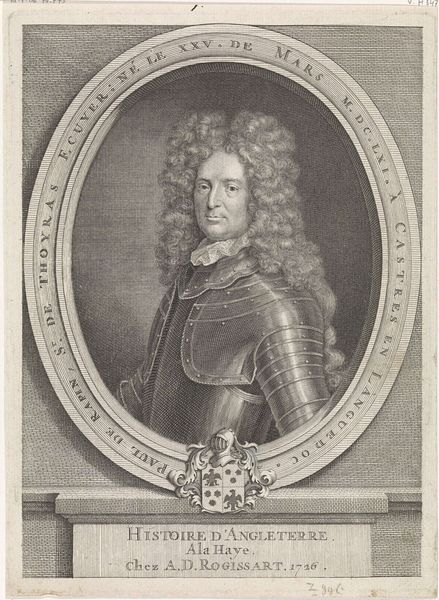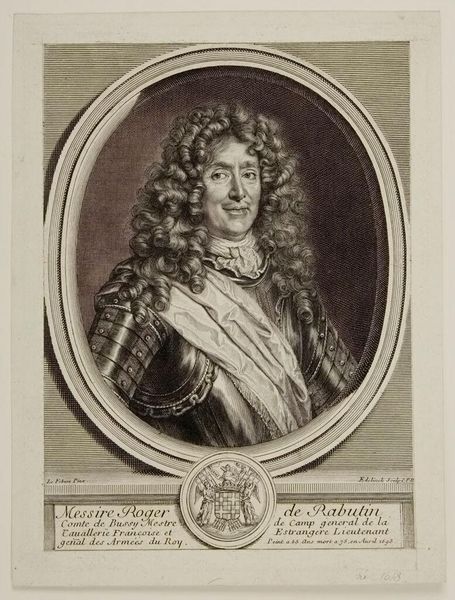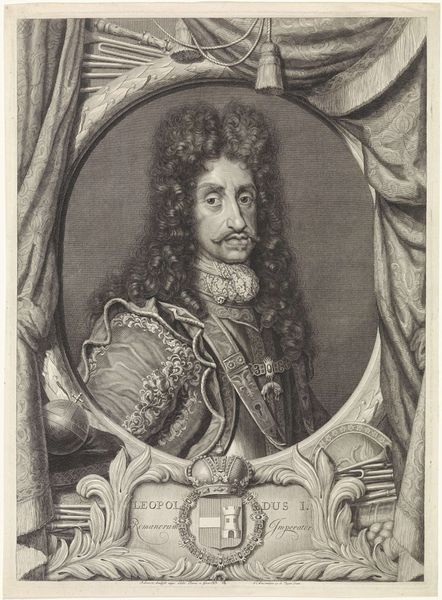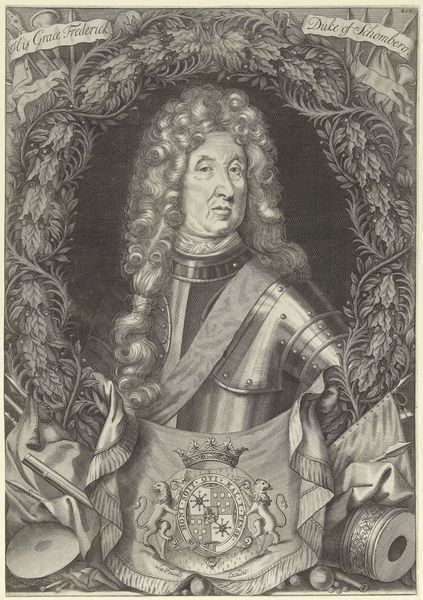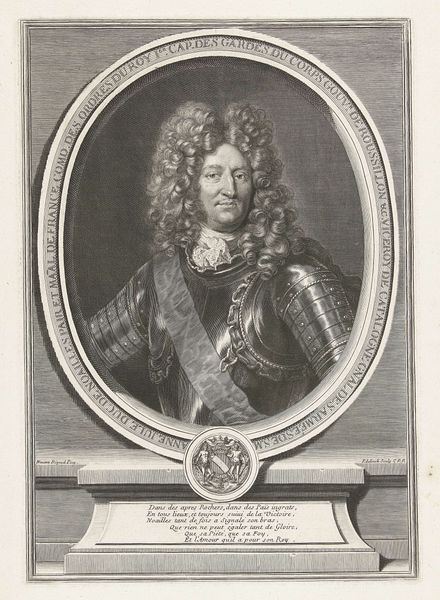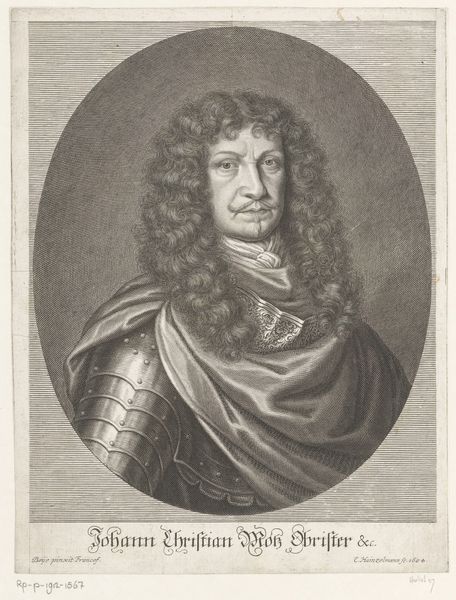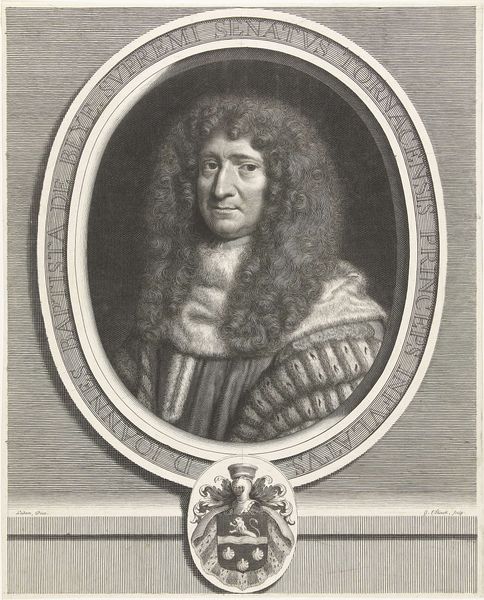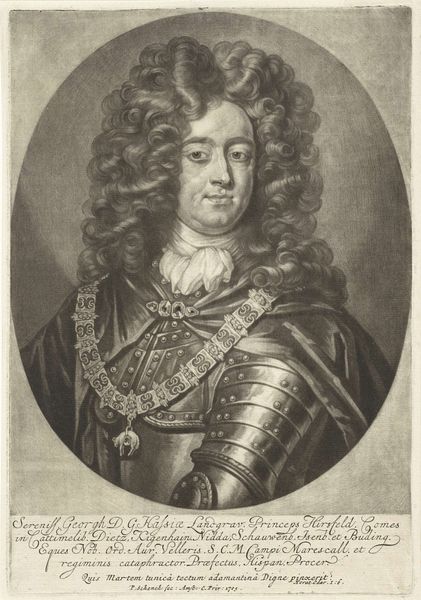
engraving
#
portrait
#
baroque
#
history-painting
#
academic-art
#
engraving
Dimensions: height 218 mm, width 158 mm
Copyright: Rijks Museum: Open Domain
Curator: Looking at this Baroque portrait, the level of detail achieved through engraving is astounding. The portrait dates back to between 1693 and 1707, and it is an image of Roger de Bussy-Rabutin, as interpreted by Gérard Edelinck, now held at the Rijksmuseum. Editor: Yes, the swirling mass of the wig contrasting with the cold, hard lines of the armor certainly grabs attention immediately. I'm curious about the labor and process involved. Curator: The context surrounding portrait engravings of this era speaks volumes about the subject's social standing. Bussy-Rabutin was a Comte, a man of notable status. His role as general in the French cavalry would definitely call for an image emphasizing power. The engraving was meant to solidify his image, showcasing his legacy to a broader audience. Editor: Agreed, although the etching process interests me perhaps more, to start: imagine the multiple states, corrections, proofs pulled to get the textures right for the wig, the polished armour, the light on that sash... Every part is broken into tiny actions and repeated. Curator: Precisely. Also, Edelinck was a highly regarded engraver of the time, which says a great deal about Bussy-Rabutin's desire for prestige. This image helped promote this view in French high society. Engravings like this often served political functions as well, supporting the monarchy by idealizing key figures. Editor: And think about the dissemination: the act of multiplying an image... engravings allow these messages of prestige and power to travel far and be consumed widely. It really shows the connection between art, labor, and power. Curator: Exactly, making this print more than just a likeness. It is part of the cultural machinery through which social hierarchy was visualized. Editor: This kind of materiality truly brings forth the intersection of artistic skill and societal narratives that inform our understanding of history and artmaking then and now. Curator: Absolutely; the engraving’s historical imprint still reverberates within current social dynamics and continues to fascinate us in our approach to image consumption.
Comments
No comments
Be the first to comment and join the conversation on the ultimate creative platform.
